Poinsettias are one of our favorite festive plants! We love their star shape and vibrant red color, perfect for decorating the Christmas table! However, many people are unaware that to stay beautiful for a longer time, this flower requires specific conditions, which inevitably can lead to problems. So, how do you treat a poinsettia that is losing its leaves? Discover the solutions to bring your plant back to life!
Poinsettia Losing Leaves: How to Treat It? What Are the Causes?
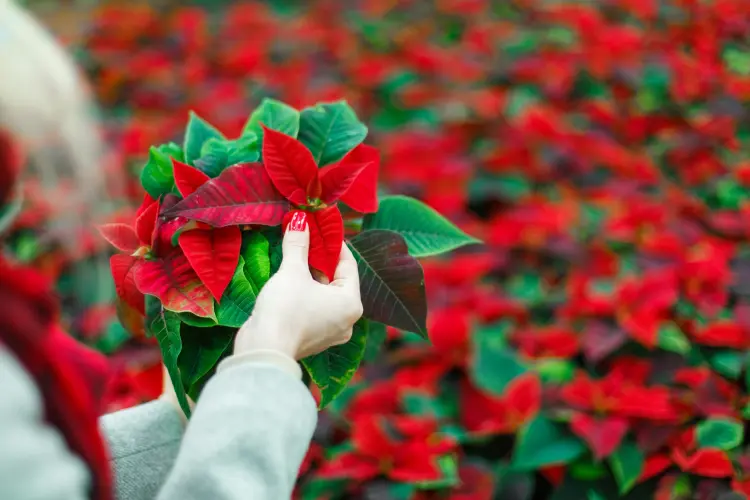
chibelek/envato
To care for a poinsettia that is losing its leaves, it is first necessary to be aware of the causes that can lead to such a problem. Generally, sudden changes in temperature or lack of water or light can be the cause of leaves drying and falling. Continue reading to discover solutions to better care for and preserve your plant during the end-of-year holidays:
The Plant Has Been Exposed to Low Temperatures, How to Save It?
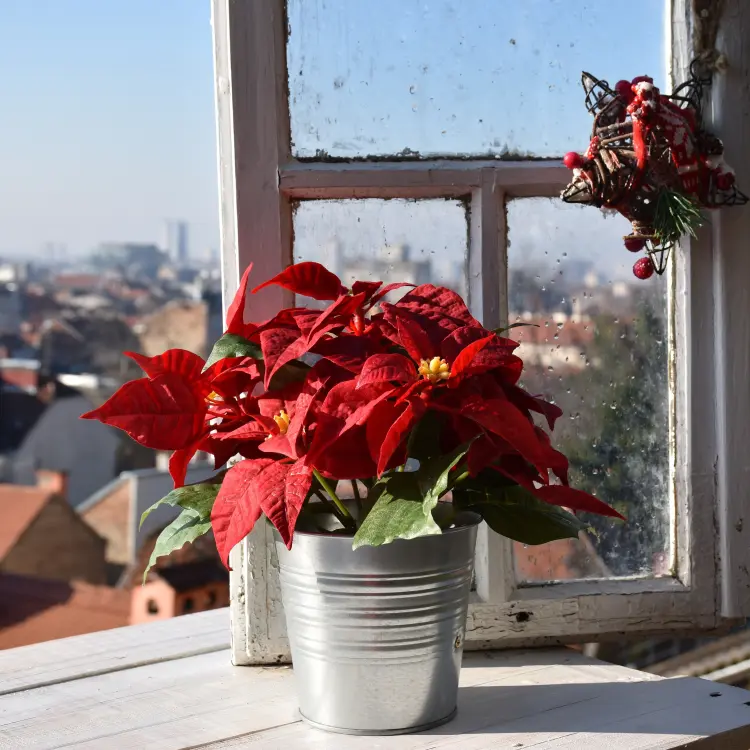
vedrana2701/envato
These beautiful red flowers native to South America do not like the cold, contrary to what one might think. Fluctuations in temperatures or low temperatures can often cause leaves to dry out and fall off.
What to do? Keep your plant away from cold windows in winter, drafts, and exterior doors that open frequently. The ideal temperature for this plant is between 18-21°C/64-69°F. Try misting its leaves every day and only water once the soil is dry.
How To Treat A Poinsettia That Is Losing Its Leaves Due To Improper Watering?
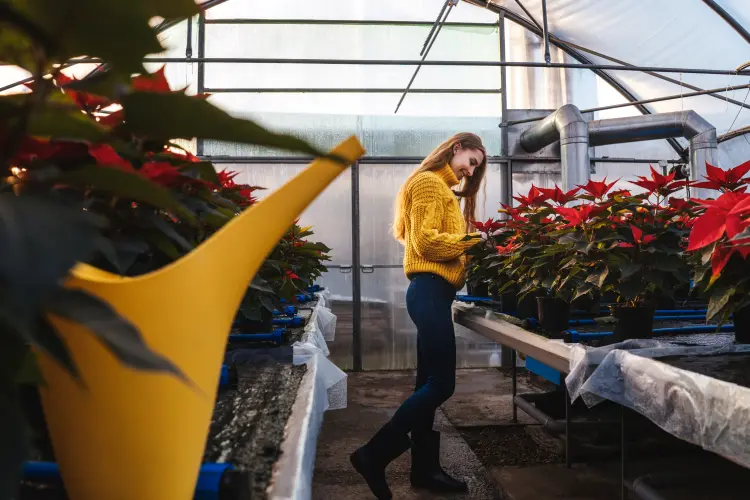
maksimovata/envato
Watering is extremely important for this star plant of Christmas decoration. Excess water can cause leaf loss, while too little water can result in them drying out.
What to do? Foremost, make sure its soil is well-drained and moist. The top layer of soil should be dry between waterings. When the soil is dry, water deeply: the water should flow underneath. Leave the plant in the water for 15 to 20 minutes, then discard the water. Follow such a watering routine and the plant should recover.
- And how can you save a plant that has had too much water? Start by making sure the drainage holes in the pot are not blocked, then move the plant to a shady spot. If that doesn’t help, you can even try repotting the plant in another pot by removing some of the soggy soil and replacing it with dry soil.
Poinsettia Losing Leaves Because It Lacks Sunlight

kiwitanya/envato
During its flowering period, this beautiful plant with festive colors needs plenty of sunlight during the day to flourish. Otherwise, its leaves will turn yellow and fall. The rest of the time, this is not so much the case.
What can you do to treat a poinsettia that is losing its leaves due to a lack of light? The plant needs at least 6 hours of direct or indirect sunlight. Once the Christmas party is over, place it in a well-lighted place, for example near a window in the living room or kitchen. This will help it regain its color.
Also read: When and How to Prune Oleander After Flowering? Tips & Advice for Care in Fall & Winter
The Presence of Pests on the Plant Can Cause Leaves to Fall
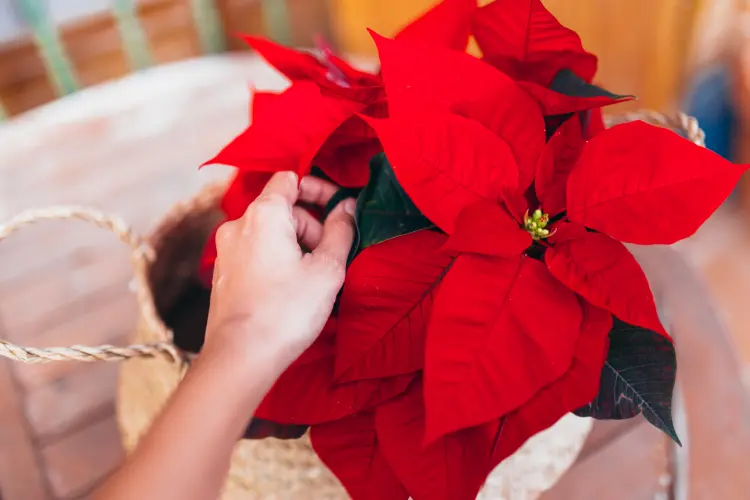
enitas/envato
Some insects, for example white flies, spider mites and mealybugs, can invade this beautiful flower and suck its sap. As a result, the poinsettia leaves dry out and fall off.
What to do? Inspect the plant by looking well below its leaves. If you see parasites, you must get rid of them at all costs. There are plenty of natural products you can use to fight pests. For example: neem oil, black soap or rubbing alcohol. The plant will come back to life shortly after.
Exposure to Carbon Monoxide Can Contribute to Leaf Loss
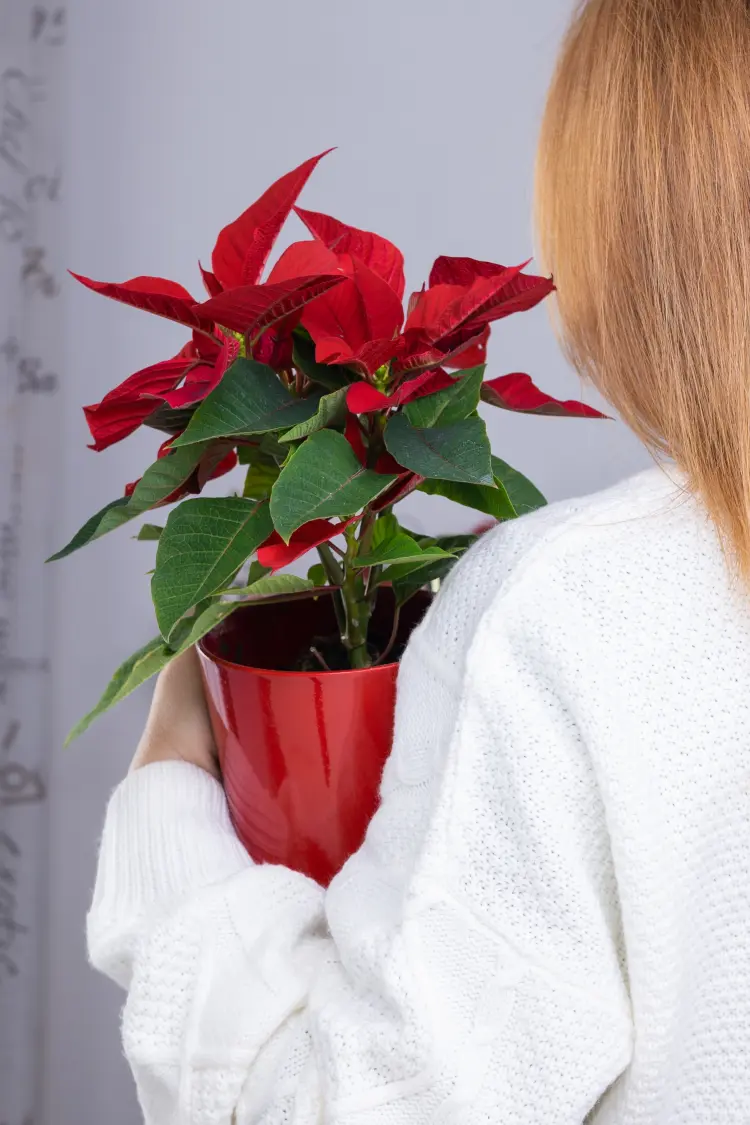
dargog1/envato
The Christmas star, as this flower is still called, is very sensitive to carbon monoxide (CO) which is also very toxic to humans. The plant will sense the presence of this poison in the house long before you realize it, and will show it to you by shedding its leaves. So, if the poinsettia’s leaves fall shortly after you bring it home, the presence of carbon monoxide in very large quantities may be the reason.
What to do? The first thing to do is to check the CO levels in your home and take the necessary measures if such is the case.
Also read: Why Are Cyclamen Flowers Falling Off? What Are the Conditions in Which the Plants Thrive?
